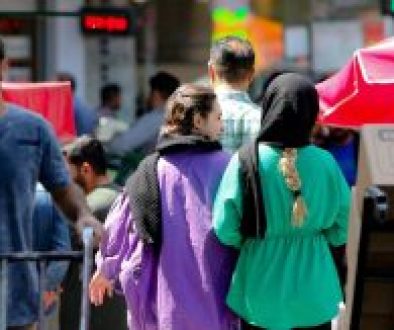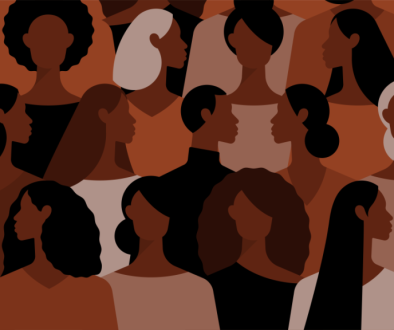UN Women: Press release: Less than 1 percent of women and girls live in a country with high women’s empowerment and high gender parity

Kigali, 18 July 2023 – No country has achieved full gender parity and fewer than 1 percent of women and girls live in a country with high women’s empowerment and a small gender gap, according to a new global report launched by UN Women and UNDP today at the Women Deliver Conference. The report provides—for the first time—a more comprehensive picture of progress in women and girl’s human development.
The report sees UN Women and UNDP join forces to propose the Women’s Empowerment Index (WEI) and the Global Gender Parity Index (GGPI) as the twin indices for measuring gender parity and women’s empowerment.
The twin indices offer different but complementary lenses for assessing progress in advancing women’s human development, power, and freedoms. Together, they shed light on the complex challenges faced by women worldwide and pave the way for targeted interventions and policy reforms.
Analysis of 114 countries has found that women’s power and freedom to make choices and seize opportunities remain largely restricted. Low women’s empowerment and large gender gaps are commonplace.
The WEI measures women’s power and freedoms to make choices and seize life opportunities across five dimensions: health, education, inclusion, decision-making, and violence against women. Similarly, the GGPI evaluates the status of women relative to men in core dimensions of human development, including health, education, inclusion, and decision-making.
Globally, women are empowered to achieve on average only 60 percent of their full potential, as measured by the WEI. They achieve, on average, 72 percent of what men achieve across key human development dimensions, as measured by the GPPI, reflecting a 28 percent of gender gap. These empowerment deficits and disparities are harmful not just to women’s well-being and advancement but also to human progress.
Commenting on the report’s findings, UN Women Executive Director Sima Bahous stated, “With the Sustainable Development Goals, the global community has made a strong commitment to gender equality and women’s empowerment. However, we can see clearly with these new indices that across countries, women’s full potential remains unrealized, and large gender gaps continue to be commonplace, thereby obstructing and slowing progress in the realization of all the Goals”. “Sustained efforts are therefore needed to deliver on the promise of gender equality, secure the human rights of women and girls and ensure that their fundamental freedoms are fully realized”, she concluded.
The Report also highlights that less than 1 percent of women and girls live in countries with both high levels of women’s empowerment and high gender parity, while more than 90 percent of the world’s female population —3.1 billion women and girls — live in countries characterized by a large women’s empowerment deficit and a large gender gap.
“This eye-opening analysis shows that higher human development is not by itself a sufficient condition, as more than half the countries with low and middle performance in the women’s empowerment index and global parity index fall in the very high and high human development groups,” said UNDP Administrator, Achim Steiner. “Too many women and girls are living in countries that only allow them to reach a fraction of their potential and these fresh new insights are ultimately designed to help to effect real change—for real people”.
The WEI and the GGPI are useful tools for policymakers, providing vital evidence on progress and the urgent policy actions needed to achieve women’s empowerment and gender equality. The indices reveal the need for comprehensive policy action in the following areas:
Health policies: Support and promote long and healthy lives for all, with a focus on universal access to sexual and reproductive health.
Equality in education: Address gaps in skills and quality of education, especially in fields such as STEM, to empower women and girls in the digital age.
Work-life balance and support for families: Invest in policies and services that address work-life balance, including affordable quality childcare services, parental leave schemes, and flexible working arrangements.
Women’s equal participation: Set targets and action plans for achieving gender parity in all spheres of public life and eliminate discriminatory laws and regulations that hold women back.
Violence against women: Implement comprehensive measures focused on prevention, changing social norms, and eliminating discriminatory laws and policies.
The indices serve as a catalyst for change, enabling comprehensive tracking and assessment of progress and gaps across countries. They come at a critical juncture, where global challenges threaten to undermine human development and exacerbate existing gender disparities. By harnessing these indices, policymakers, stakeholders, and communities can take informed action and accelerate the journey towards a more equitable and inclusive world.
The world is at a critical crossroads and this report is a key contribution to the Sustainable Development Goals stock-taking moment and a means of furthering the efforts each of the 17 goals, in the lead up to the SDG Summit in September.
https://www.unwomen.org/en/news-stories/press-release/2023/07/press-release-less-than-1-percent-of-women-and-girls-live-in-a-country-with-high-womens-empowerment-and-high-gender-parity




